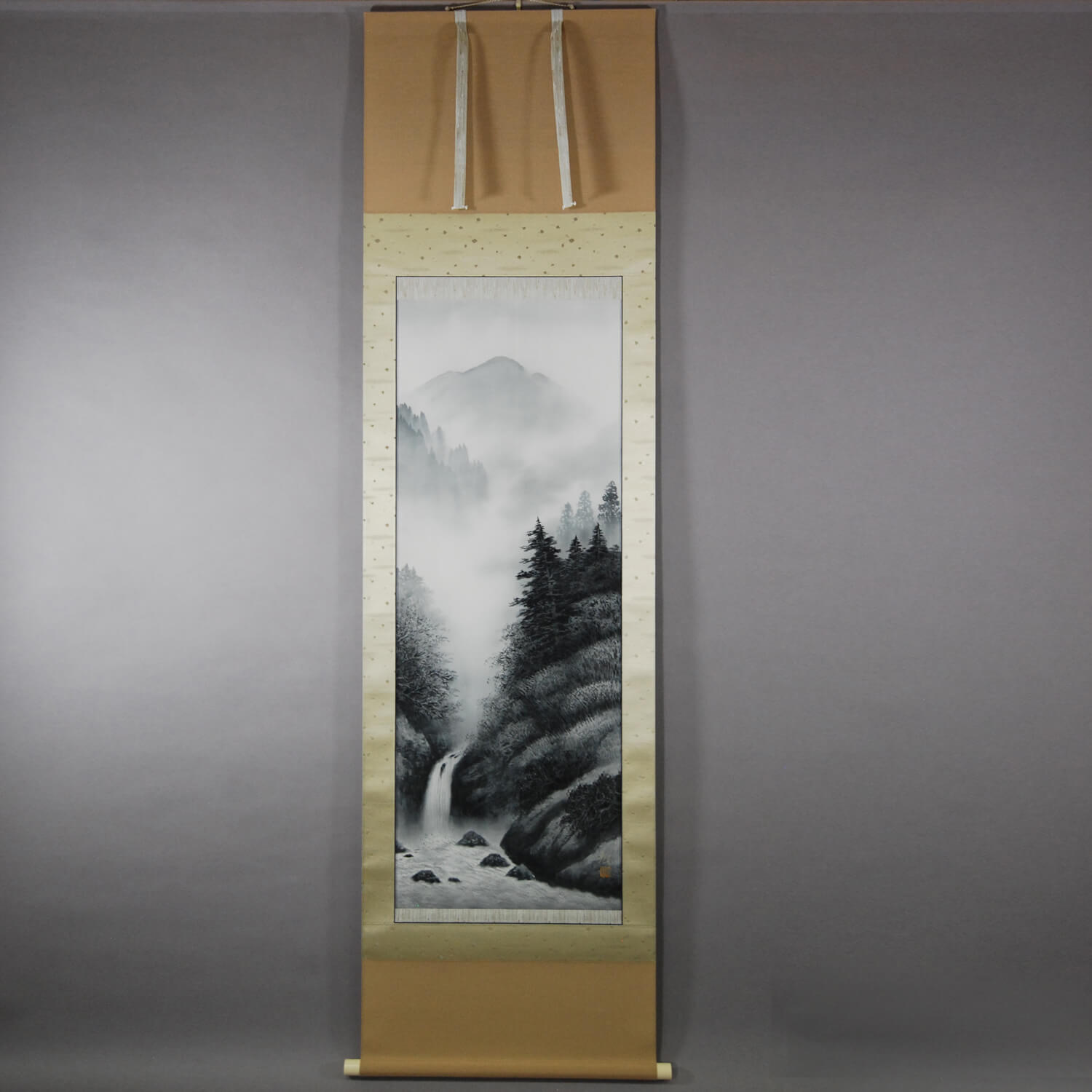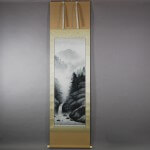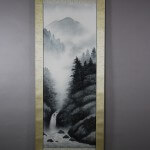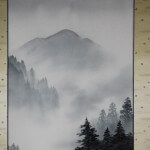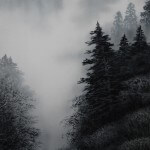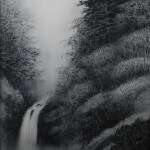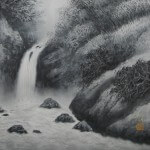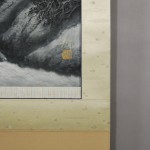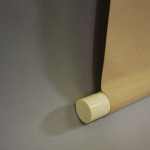Products Lineup
News / Blog
Other Menus
Landscape Painting in “Sumi” Ink / Katō Tomo - Suiboku Sansui
- Product ID
- 0009
- Name
- Katō Tomo
- Profile
Born: 1947. Member of the Nitten Exhibition. Disciple of both Kodama Kibō and Okuda Gensō.
- Size
- 600mm x 2000mm
- Roller End Material
- Artificial ivory
- Material of the Work
- Silk
- Price
- JPY 480,000
- Stock Condition
- In stock
- Payment: Click the Paypal Mark
- Duty and Taxes
Import duty and taxes are beyond our control and may apply to your shipment. Please noted that these fees are the responsibility of the buyer.
- Description
However much the Japanese all is conceived in an artificially contrived environment, they seem to have an innate longing for primitive simplicity, close to a natural state of living. Hence, the city residents find pleasure in summer camping in the woods, traveling in the desert, or forging ahead on an unbeaten trail. We wish to go back to the bosom of nature once in a while and feel her pulse directly. We don’t forget the earth. We are always friendly with Nature and appreciate her unaffected simplicity.
Katō Tomo expresses the beauty of a mountain glen in this painting. He was absorbed in the solemn workings of nature and did his best to paint them. He expressed perspective through clouds and haze. It is interesting that he changes the painting style of the trees depending on their placement in the picture. This is a truly wonderful work.

